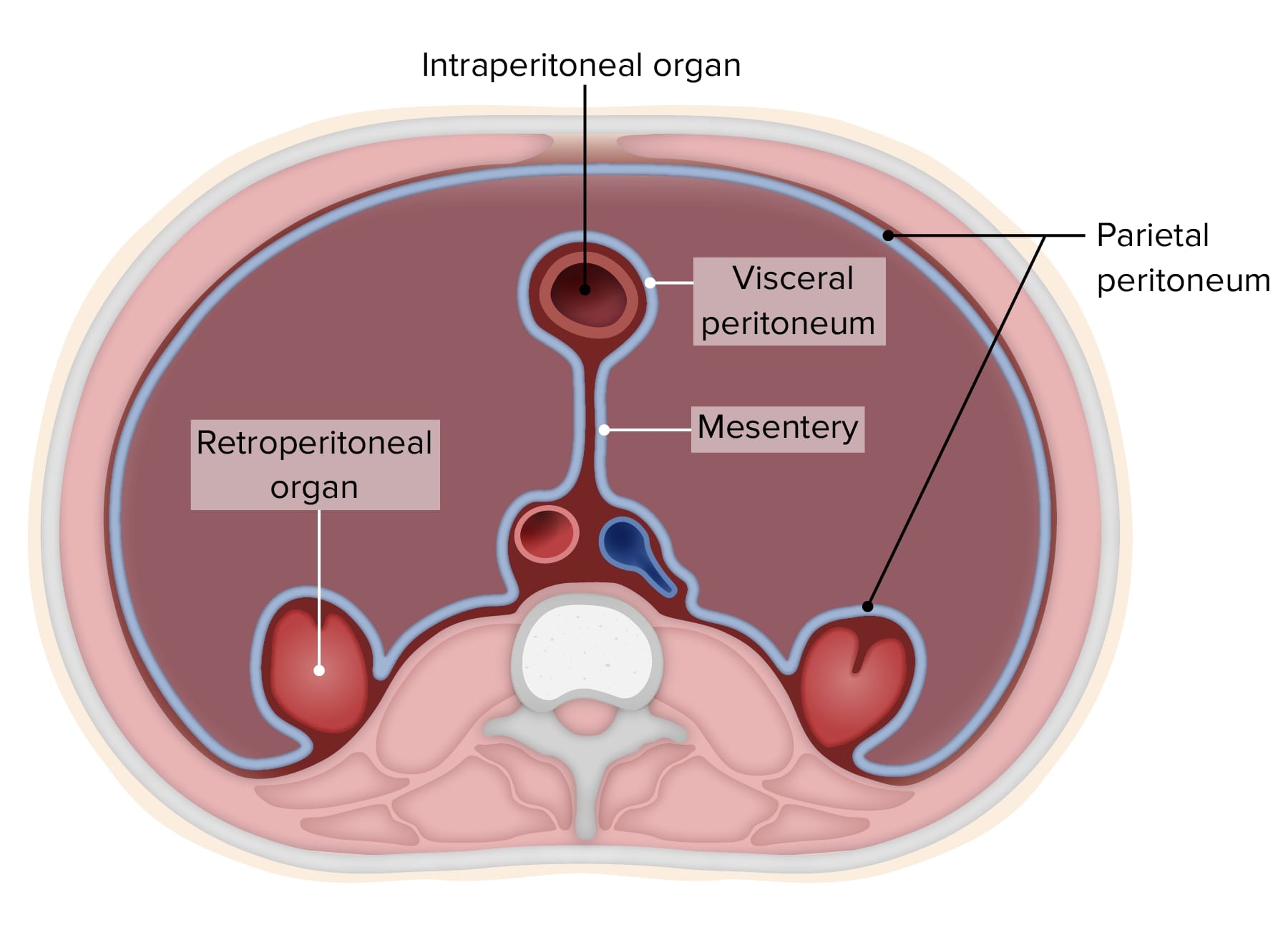Playlist
Show Playlist
Hide Playlist
Greater Sac and Greater Omentum
-
Slides Greater Sac and Greater Omentum.pdf
-
Reference List Anatomy.pdf
-
Download Lecture Overview
00:01 So now let's have a look in a bit more detail at the greater omentum. Like I said it's a strange organ. 00:07 It's very much like an apron that's draping down from the transverse colon, but it does have some specific bits to it because it doesn't just hang from the transverse colon. 00:16 It actually is an important ligament and again it would be helpful to perhaps have a look at some embryological resources here as well because it comes from that rotation of the gut tube during development, but actually any part of the greater omentum that is touching 2 organs, its ligament will be given that name. So here we have the gastrophrenic part of the greater omentum and that is attaching from the stomach to the diaphragm. 00:42 So up in the top left hand aspect, we have a part of the greater omentum that's running from the stomach to the diaphragm, gastrophrenic. We have a piece of it that's running from the stomach to the spleen, gastrosplenic. And we have a part that's running from the stomach, the classical bit that runs from the stomach all the way down and then back up to the transverse colon. So that's the gastrocolic ligament. And you can see the gastrocolic ligament here. That's the main portion of it. A bit going up to the stomach, a bit going up to the spleen, and a bit going up to the diaphragm; gastrosplenic, gastrophrenic. So here we can see where we have the transverse colon. Now we can appreciate where we have the supracolic compartment and the infracolic compartment separations of that greater sac and is often helpful if you have access to it to lift up the greater omentum to form a shelf. Everything above it is the supracolic, everything beneath it is the infracolic. Let's just have a look at the infracolic compartment then because here we've got running on the posterior abdominal wall we've got the parietal peritoneum, but where we have that layer of peritoneum on the posterior abdominal wall it becomes reflected off the posterior abdominal wall to form roots of the mesentery. And these roots of the mesentery separate a right infracolic and a left infracolic space. These roots of the mesentery is where the small intestine becomes suspended. Remember or those small intestine actually occupies a large part of the central portion. It classically moves from the upper left quadrant all the way down to the lower right quadrant. And that is very typical of that kind of dotted line in the middle as it's passing from the upper left quadrant to the lower right quadrant separating the infracolic compartment into right and left, but actually those dotted lines in the middle is where peritoneum leaves the posterior abdominal wall to form the mesentery which suspends the small intestine. As the peritoneum on the posterior abdominal wall continues laterally and it now resides over the descending and ascending colon, which remember a secondarily retroperitoneal, we then have some gutters. 03:03 These gutters are little grooves in between the ascending and descending colon, the right and left paracolic gutters. These are important because free fluid if you're standing up or if you're semi-kind of erect, these channels can allow fluid to pass, in this example, from the upper right quadrant all the way down to the lower right quadrant and that can actually mimic appendicitis if free fluid and infection can run into that space.
About the Lecture
The lecture Greater Sac and Greater Omentum by James Pickering, PhD is from the course Peritoneum and Peritoneal Cavity.
Included Quiz Questions
How many layers do peritoneal ligaments contain?
- 2
- 1
- 4
- 6
Which organ is located outside the supracolic compartment of the greater sac?
- Appendix
- Stomach
- Spleen
- Liver
What is the deepest part of the body in the supine position?
- Hepatorenal recess
- Right paracolic gutter
- Left paracolic gutter
- Greater sac
- Lesser sac
Customer reviews
5,0 of 5 stars
| 5 Stars |
|
1 |
| 4 Stars |
|
0 |
| 3 Stars |
|
0 |
| 2 Stars |
|
0 |
| 1 Star |
|
0 |
muy buen profesor, clase buena para un contenido más complejo




